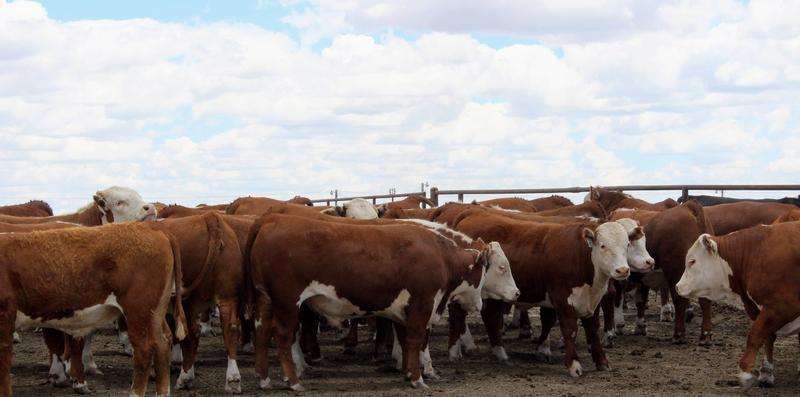K-State experts say grazing cattle on crop residue is option for winter feeding
MANHATTAN, Kan. — Most cattle producers will agree that hauling feed and delivering hay to the cattle in the winter can be labor intensive and expensive. Experts at the Kansas State University Beef Cattle Institute point to grazing crop residues as one option to reduce feed expenses and minimize daily labor with proper planning and regular monitoring.
“Many producers have made grazing crop residues part of their management strategy because of the low winter feed costs associated with it,” said veterinarian Bob Larson. In Kansas, these residues are typically corn and sorghum.
To be successful, Larson said producers must plan for a water source, which may take extra labor to deliver it to the field where cattle are grazing.
“A lot of times there isn’t a pond on the crop field, so you have to haul out a tank in a way that doesn’t tear up the field,” Larson said, adding that producers need to plan for the cattle congregating around the water source and potentially damaging the ground.
Another step in preparing the field for gazing is making sure there is adequate fence to keep the cattle contained, said Bob Weaber, beef cattle specialist and head of the Northeast Kansas Research and Extension Center.
“Many of these fields are leased ground and they don’t always have good perimeter fencing on them,” Weaber said. “It isn’t uncommon to see cattle out grazing on stalks with a single-wire strand of electric fence surrounding them.”
Weaber said it is especially important to check electric fence often so cows don’t get out, and he stressed the importance of having a reliable fence charger.
Nutritionally speaking, Larson and Weaber agreed that cattle often select plant leaves and fallen corn ears when they first arrive on the field.
“The leaves and fallen ears hold a higher quality energy content as compared to the stalks,” Larson said.
To manage the crop residue resource, Weaber advised producers follow strip grazing protocols.
“Strip grazing allows producers to monitor how much of the field has been grazed and forces the cows to clean up a section before moving them off,” Weaber said, noting that it also allows producers to assess the body condition of the animals in the herd to make sure their nutritional needs are being met.
If strip grazing isn’t an option, Larson said cattle producers may need to consider additional supplementation as the winter months pass by.
“The longer you leave cattle on crop residues, the quality of what they are consuming decreases while at the same time the nutritional demands for gestating, spring-calving cows goes up,” Larson said. “In that case, you may need to increase the protein supplementation as the season progresses.”
To hear more about grazing crop residues, listen to the BCI Cattle Chat podcast online.
FOR PRINT PUBLICATIONS: Links used in this story
Beef Cattle Institute podcast, https://ksubci.org/2020/11/20/kfma-data-grazing-crop-residue-listener-question-more-resources/
K State Research and Extension is a short name for the Kansas State University Agricultural Experiment Station and Cooperative Extension Service, a program designed to generate and distribute useful knowledge for the well being of Kansans. Supported by county, state, federal and private funds, the program has county extension offices, experiment fields, area extension offices and regional research centers statewide. Its headquarters is on the K State campus in Manhattan. For more information, visit www.ksre.ksu.edu. K-State Research and Extension is an equal opportunity provider and employer.
Story by:
Lisa Moser
785-532-2010
lmoser@ksu.edu
More information:
Bob Larson
785-532-4257
rlarson@vet.ksu.edu
Bob Weaber
785-532-2281
bweaber@ksu.edu





